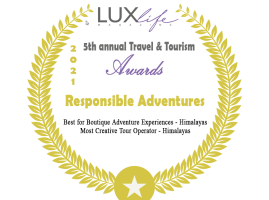Krishna Janmasthami Festival in Nepal
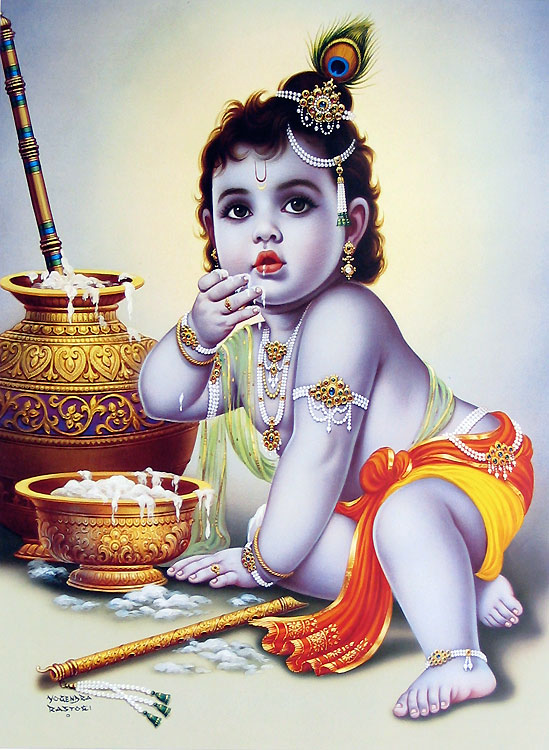
Krishna Janmashtami – Festival in Nepal Krishna Janmashtami -30th August 2021 Krishna Janmashtami -11th August 2020 Krishna Janmashtami 2019 – 24th August 2019 Krishna Janmashtami is the commemoration of the birth of Lord Krishna. It is also known as Janmashtami, and this occasion is celebrated with great enthusiasm. This vital day falls on the eighth day or Ashtami of the Krishna Paksh or the dark fortnight of the lunar month of Bhadau. No one knows precisely when this festival originated. Perhaps a thousand years back, this celebration found its space in the Hindu culture. One could come across numerous legendary tales and fables that encircle the birth of Janmashtami. The most widely believed view is that Lord Krishna is the eighth incarnation of Lord Vishnu or the Hindu trinity. The Hindus know from the Mahabharata epic that Lord Krishna’s birth destroyed the demon Kangsa who also happened to be his maternal uncle. It is stated that Lord Vishnu comes to save humanity from the hands of demons and evil whenever an imbalance develops in the universe regarding peace and prosperity. Scholars and Historians say that Lord Krishna was given birth in a cellular prison during the Dvapara Yuga to Vasudeva and Devaki. However, Vasudeva had to cross the Yamuna river on a stormy night to pass on his child to a friend to protect the child from the evil hands of Kangsa. Thus, Maiya Yasodha and Nanda of the Gokul region in Mathura became the foster parents of Lord Krishna. Lord Krishna was a fascinating child, and his talents were noticeable right from childhood. So the people started considering that this small boy named Krishna was sent amongst the commoners to protect them in all tumultuous circumstances. It can be said that this festival originated in Gokul initially, covering the Mathura region and later on spreading throughout the state of Uttar Pradesh. Furthermore, after thousands of years, the nation celebrates Lord Krishna’s birth as he represents faith, friendship, love, and peace. Reasons for the celebration? The story of Mahabharata has much to do with the life of Lord Krishna. Throughout the righteous war, locally known as Dharma Yuddha between the Kauravas and Pandavas, Lord Krishna was the charioteer for Arjuna. He advised Arjuna on several life sections, such as Dharma (the righteous path), Karma (actions), Theistic dedication, Yogic paragons, liberation, knowledge, etcetera. Arjuna was in emotional turmoil after having to kill his fellow brothers and cousins. The verses quoted in this book are frequently called either a spiritual dictionary or a righteous life guide. Lord Krishna declared that whenever there is a prominence of evil deeds in this universe, he would reincarnate in various forms and attire to display the path of righteousness and peace to the people. The main reason for this celebration is to unite people and strengthen the principles of unity. Dahi Handi is another essential aspect of this celebration. It is observed on the second day of Janmasthami. As a child, Lord Krishna was named ‘Makhanchor,’ the one who steals butter. He went around every household in Gokul, stealing butter. Dahi handi is an event that depicts the same butter stealing action of Lord Krishna gets narrated. An earthen pot known as handi is filled with ghee or clarified butter, butter, milk, and dry fruits. It is then suspended at a substantial height with the help of ropes. Finally, all the young local guys gather to make a human pyramid and climb on top of each other to reach the earthen pot and break it. This is one activity that is intended to teach the principles of teamwork. Check out our Trekking packages for Nepal, Bhutan, India, and Tibet.
Indra Jatra Festival in Nepal
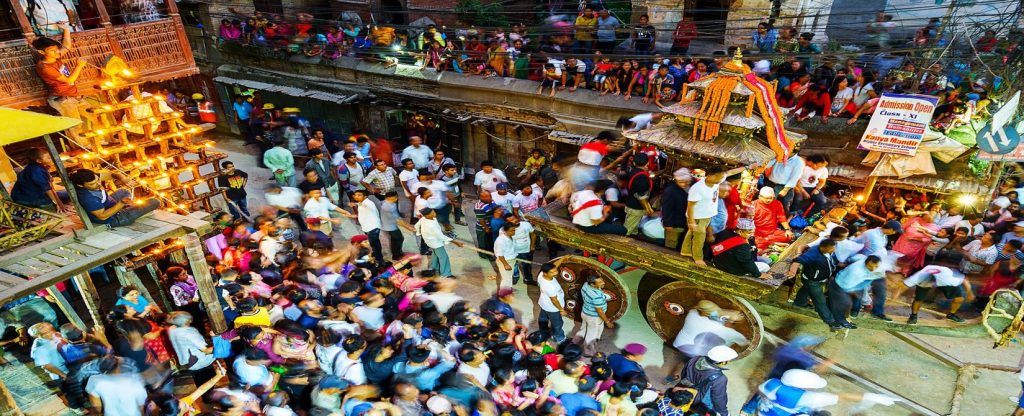
Festival in Nepal – Indra Jatra 22nd August 2021 1st September 13th September 2019 Indra is considered the Lord of Rain and the King of heaven. Jatra means procession in Nepali. Indra Jatra is a day to celebrate him. This festival takes place in Kathmandu, the capital of Nepal. Some say this is a day to thank Lord Indra for the rain during the monsoon. While according to others, this festival is to honour Bhairav, another manifestation of Shiva, in a destructive form. When is Indra Jatra celebrated? It is a festival that goes on for eight days. It begins from the day of Bhadra Dwadasi to Ashwin Chaturdasi on the lunar calendar annually. How is Indra Jatra observed? The celebration starts with a carnival-like atmosphere. A ceremonial pole is known as the Yasingh Linga, accompanied by the rare presentation of Akash Bhairav, which is depicted with a large mask that spouts Jaar and rakshi (local liquors). Newari and other families display images and figures of Indra and Bhairav. The Yasingh Linga is a thirty-six-foot high wooden pole chosen carefully from the Nala forest of Kavre district east of Kathmandu. According to the local faith, Indra received this flag for protection from Lord Vishnu. Eventually, the living goddess – Kumari leaves the sanctity of her temple in a palanquin, leading a procession through the streets of Kathmandu t thank the rain god, Indra. The festival’s main highlight is the parade of masked dancers who represent the deities along with demons and chariots. The Newari name for Indra is Yanya. Another remarkable thing to witness is the local liquor known as jaad flowing from the statue of Bhairav. This occurs at the Hanuman Dhoka, a part of Bansantapur, Nepal’s 10 World Heritage sites. The procession consists of: • Ganesh (Chariot) • Kumar (Chariot) • Kumari (Chariot) • Majipa Lakhey • Sawan Bhaku • Pulukishi Additionally, various dances are held on the open stages called dabu in the city. The statue of Swet Bhairav and other deities of the Basantpur Durbar Square are displayed.
Deepavali or Tihar or Diwali
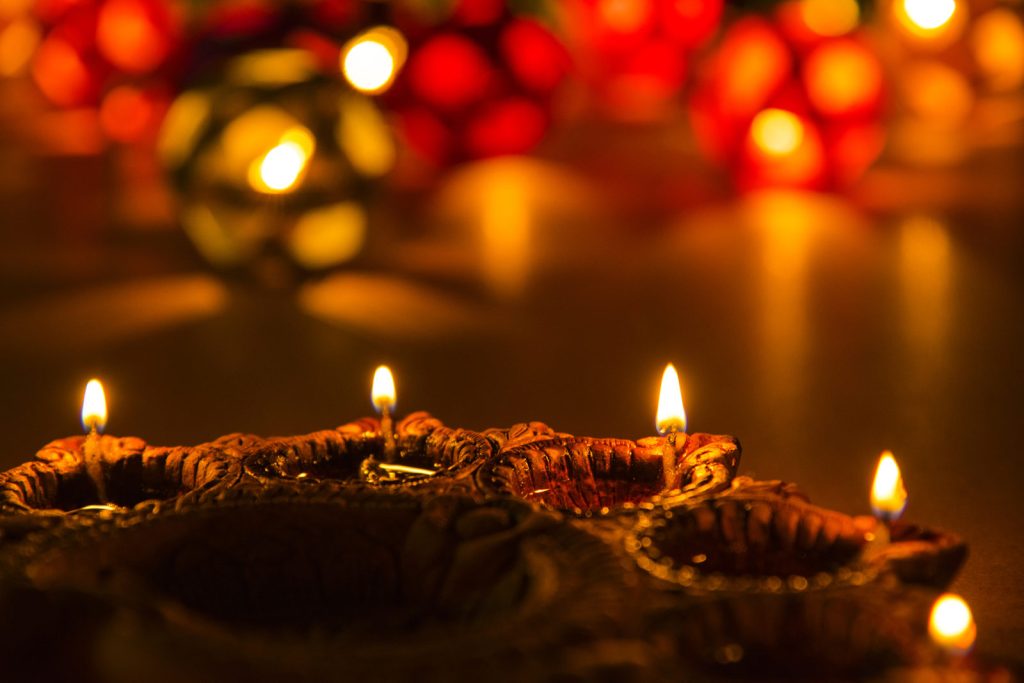
Deepavali or Tihar or Diwali Deepavali or Diwali is known as Tihar in Nepal, and it ranks second only to Dashain. This festival takes five days during the Nepali month of Kartik (October to November on the Solar Calendar). The Hindus honour crows, dogs, cows, bulls, and Laxmi – the Goddess of luck and wealth. Many candles and lanterns are lit in Goddess Laxmi’s honour; hence, Tihar is also known as the festival of lights. The celebration of lights usually falls from mid-October to mid-November. Festival Traditions of Tihar Tihar Festival is the second most significant Hindu festival in Nepal. It is celebrated for five days and bestowed with Nepal’s traditional cultural characteristics. Moreover, each day marks a different animal; for example, the first day is celebrating or worshipping crows, known as the ‘harbinger of death.’ People offer rice on the ground to feed the crows. The second day of Tihar honours the dogs, believed to be ‘the guardians of the god of death.’ The third day welcomes Laxmi, the Goddess of Wealth. On the fourth day, honour and thank the cows. Finally, the fifth day is a vital bonding day between brothers and sisters. The sisters place ‘Tika’ on their brothers’ forehead while praying for their excellent health, prosperity, and long life; the brothers return this favour by showering the sisters with gifts. On the first day; Kaag Tihar/Crow Day, worship of crows Hindus worship the crows ‘the messenger of death, by offering them rice. This is one day in the year when they get fed and can take a break from scavenging. The people try to ensure that the crows are well fed; otherwise, they believe that the dissatisfied crows will bring bad luck to the coming year. The second day, Kukur Tihar/Day of the dogs. Kukur Tihar is celebrated to honour the Nepalese dogs’ belief that their deceased relatives’ souls are guaranteed entrance into heaven. People put ‘Tika’ on the dog’s forehead and floral, 9usually Marigold garlands, followed by a good meal. The Nepalese Hindus believe that the dog’s role is vital as the ‘gatekeeper of death’ and leads the deceased’s souls onto the other side of the river of death in the afterlife. On the day honouring the dogs, even the armed services such as the Police, Armed Police, and Army’s dog unit apply Tika and beautiful garlands to the dogs in their unit as a sign of appreciation of their work. On the third day, Gai Tihar or Laxmi puja – the cow’s honouring and the Goddess of prosperity. The Nepalese worship cows and the Goddess of wealth – Laxmi, on the third day of Diwali. Most people consider this day the most important festival day as everyone likes property. The devotees wake up early to clean each room, nook, and corner thoroughly. Then, they bathe before applying red Tika on the forehead, floral garland on the neck, and tying holy string given by a Brahmin priest to the tail of a cow. Come the evening, many candles, oil lamps, and electric lights are lit up by the doors, staircases, walls, and roof. All Nepalese homes are made as bright as possible, believing that the lights will grab Laxmi’s attention and entice her to visit their house. On Laxmi puja, all businesses remain open to welcome the Goddess of wealth. The children and the youth go around the house singing traditional Diwali songs – almost like Caroling; the house owners give them money, sweets, fruits, and rice in return. This is called Deusi Bhailo. Despite being banned in Nepal, kids and adults also light up fireworks during this festival. The fourth day: Goru Puja, or honouring the Ox or bull. The fourth day is a bit more diverse in what is honoured, depending on the people’s ethnicity. Ox is considered an indispensable assistant to the farmer, hence the honouring of the Ox (Goru puja). An ox is deemed to represent Govardhan Hill https://en.wikipedia.org/wiki/Govardhan_Hill, and as a tribute to it, cow dung is used during Govardhan puja. The Newar community considers this day as their New year. Therefore, all Newars gather for this festival in the Kathmandu Valley and perform Maa puja to honour themselves. The oldest patriarch of the family paints two geometric figures, namely; i) to bless all members of his family ii) to celebrate the death of Yama ( the god of death) and his messenger. All family members celebrate and indulge in delicacies, sweetmeats, drinks, and merrymaking. The fifth day: Bhai Tika/ siblings day. The fifth day is the last day of the Deepavali/Diwali/Tihar festival. The siblings gather together on this to celebrate each other. First, the sisters put multi-coloured tika, a lovely garland on the brothers, followed by special treats known locally as ‘Shagun.’ Then, the brothers perform the same ritual and shower them with gifts. This celebration strengthens the bond between brothers and sisters. Tihar Festivities. There are no hard and fast rules for this festival’s ceremonies, although some old traditions are carried out in modern-day Nepal. Nevertheless, there are some similarities between Christmas and New year, like with the rest of the world. It is a tradition to purchase gold and silver jewellery on the eve of Laxmi puja with the hope of more prosperity for the coming year. Once the festival of lights begins, all rooms of every house are cleaned thoroughly and painted to welcome the visiting gods and goddesses. The people get dressed in their new clothes hoping prosperity will stay with them for the rest of the year, if not the remainder of their lives. The business communities replace old account books that start with new books for better business. Every household and shop is lit up in bright lights; some even light fireworks for entertainment. Tihar is also a time for family and friends to rejoice and exchange gifts while indulging in food and drinks. Conclusion Tihar is one of the eleven festivals that occur during the autumn months of October to the
Dashain or Vijaya Dashami
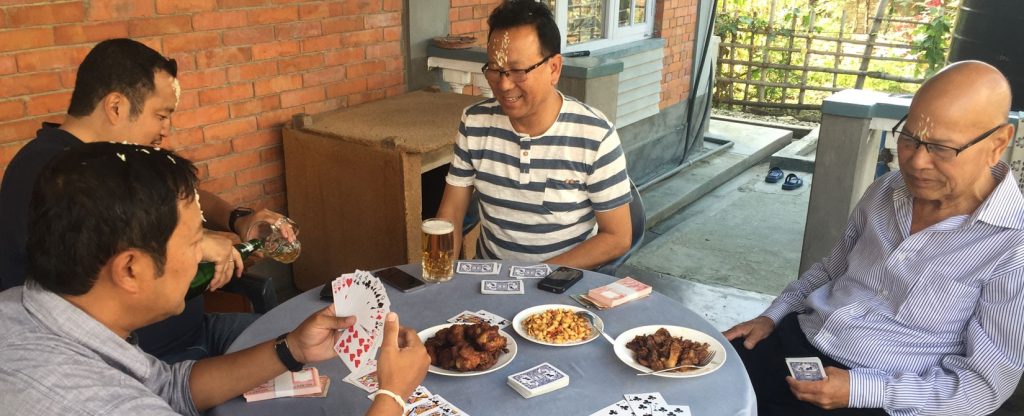
Dashain or Vijaya Dashami is the most significant Hindu Festival in Nepal. Dashain or Vijaya Dashami is the longest and most significant Hindu festival widely celebrated throughout Nepal. It is fifteen days in length; it falls on the bright half of the lunar month of Ashoj, which usually falls between September/October and ends on the day of the full moon. The Goddess Durga is worshipped in her numerous manifestations during the first nine days, known as Navratri, until the ninth evening – Navratri. A grand procession of idols representing various Hindu gods and goddesses is taken out in every village, town, and city on the tenth day to rejoice in the victory of good over evil. The remaining five days mark the celebration of blessings from the goddess to commemorate the victory. Like many religious festivals, Dashain involves many prayer (puja) rituals, generous offerings of exceptional food, fruits, animal sacrifices, and blessing from the family elders, followed by plenty of merrymaking. Navratri The first three nights are dedicated to Durga’s various manifestations, such as Mahakali, the goddess of divine power (shakti) and action; Parvati, a dedicated wife and mother; and Kali, the goddess of destruction. The next three nights are devoted to Mahalaxmi, the goddess of purity and wealth. The final three nights are dedicated to Maha Saraswati, the goddess of knowledge and arts. As usual, there are some mythological tales connected to this festival. The most common one is the victory of the gods over the demons. Despite this festival being celebrated to honour Durga, she is believed to have had all gods and goddesses’ collective strength to defeat the monster Mahisasura. The first nine days represent the fierce battle between Durga and the beast. Legend has it that gods were defenceless against the army of demons led by Mahisasura. So the gods were instructed to contribute a part of their divine prowess to form a new goddess to defeat the demons. Hence, Mahisasura Mardini’s formation – another name for this manifestation of Durga was devised with the combined might of 330 million Hindu gods and goddesses. Dashami, or the tenth day, is celebrated when Durga, combining power with the gods and goddesses, defeats Mahisasura. Rituals of the fifteen days Every single day of the fifteen-day festival holds its importance. Ghatasthapana is the first day of the celebration. Ghata or Kalash means “holy vessel,” and sthapana means to inaugurate. Kalash symbolises Durga covered and purified with cow dung, spruced up with flowers, and placed in a hallowed room where local terms are known as ‘puja or Dashain Ghar’ for prayer. Like most Hindu festivals in Nepal, cow dung is utilised to clean and paint the house and porch as it is believed to be holy and works as a purifier. A rectangular area is set aside to place the Kalash in the middle. Barley seeds, believed to be pure, are placed around the Kalash. In ancient times these seeds were brought from the bed of a holy river. The Kalash is treated as a representation of the goddess and is worshipped throughout the festival. On the day of Ghatasthapana, Shailaputri, another form of Durga, is worshipped. An oil lamp known locally as ‘diyo’ is lit throughout the Dashain until this festival’s final day. Hindus worship the Kalash during the evening and morning rituals. The rituals are either led by Brahmin priests or the elder of the household. These rituals are performed during auspicious moments; astrologers determine these moments. The ceremonies conjure the goddess Durga to reside within the Kalash. The Kalash and sand are sprinkled with water and are protected from the sun throughout Navratri. The barley seeds grow into five or six-inch tall wheatgrass called jamara by the tenth day. It is used on the day of tika to bless the family members by the elders. The barley seeds are sown in every household to keep them purest form during this puja. The wheatgrass symbolises wealth and prosperity, and the yellow ‘jamara’ is considered auspicious. The next phase of the festival that brings significant excitement comes with Fulapati, also known as Saptami – the seventh day of the celebrations. Fulpati, meaning sacred flowers and leaves, are collected for three days from neighbouring forests. The family members are not allowed to go inside the puja ghar from this day onwards. Instead, a unique ceremony occurs in Kathmandu valley when the jamara and Kalash used by the Royal family are brought from their ancestral home in Gorkha in a three-day march complete with military ceremony priests. Government officers dress in traditional attire while waiting for the arrival of pulpati on the route to join the parade to Hanuman Dhoka. First, the fulpati and the Kalash, including the jamara, are placed in the Royal Dashain Ghar. Then, the Nepalese army fires a gun salute as the sacred items are being set at the Hanuman Dhoka Palace as the Kings used to observe it – these days, the President of the nation witnesses this ceremony. Maha Ashtami is the eighth day when animal sacrifices occur in most Hindu homes throughout Nepal. An exciting practice used to be animal offering was offered alive to be left in the Goddess’ temple’s vicinity as an offering. However, some staunch Hindus fast today, and vegetarians offer vegetables such as radishes, coconuts, eggs, and calabash (bottle gourd) instead of animals. These days the families that make an animal sacrifice consume the meat during this festival. The following night is known as Kal Ratri. Hundreds of male chickens, ducks, goats, sheep, and water buffaloes are sacrificed in temples dedicated to Durga, the old palace, police, and army barracks throughout the nation. Most people in Kathmandu make their animal sacrifices at Hanuman Dhoka at Basantapur. All the courtyards are busy night and day during this period. Navami, or the ninth day, is the final day of the Navratri. This is the day when most animal sacrifice takes place. For example, Mahisasura is believed to have taken a buffalo
Bisket Jatra Festival of Bhaktapur
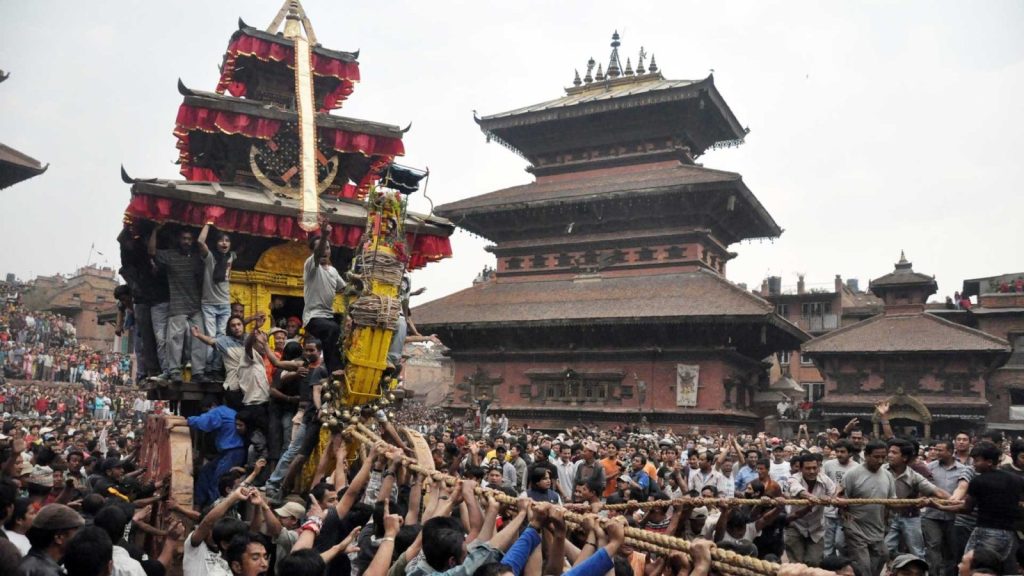
Bisket Jatra Festival, Bhaktapur Nepal. 13th April – 14th April 2020 10th April – 18th April 2019 Jatras or Festivals hold an immense religious significance amongst the Newar community of Kathmandu valley. The New communities of Kathmandu, Lalitpur, and Bhaktapur districts celebrate several Jatras devoutly annually. The Newars of Kathmandu celebrate Indra Jatra as their main Festival, the Newars of Lalitpur celebrate Rato Machindranath Jatra, while the Newars of Bhaktapur observe Bisket and Gai Jatras. Bisket and Gai Jatras are important festivals where thousands of people gather at the Bhaktapur Durbar square to watch these festivals. The Bisket Jatra is a nine-day festival that falls at the end of the Nepalese month of Chaitra. This Festival signifies the end of a year and the beginning of a new year on the Bikram Sambat calendar. The Jatra’s primary focus is pulling chariots of two deities, namely the Goddess Bhadrakali and the wrathful God Bhairav. The chariots are assembled in the Bhaktapur Durbar square a few days before the event. Then, young locals pull it through the narrow streets of Bhaktapur. The History of Bisket Jatra Several historical stories behind the Bisket Jatra relate to the gods and goddesses. One of the many versions of the locals’ stories is snakes, which the Newars of this vicinity widely accept. Thus, Bisket Jatra is also called the “Festival after the serpent’s death.” Various areas of Bhaktapur celebrate this Festival according to their customs. The Princess and her snakes King Jagajyoti Malla was fascinated by the folklore and myth about a beautiful princess and her husband’s recurrent deaths. The Princess was bound by a curse that compelled anyone marrying her to die the next day. As a result, many young men lost their lives after marrying the Princess. Subsequently, a young man was chosen to marry the Princess, despite the worries of his elderly mother. Goddess Bhadrakali came in the guise of another elderly lady and advised the young man to stay awake even after the Princess fell asleep. The Princess lay in bed and fell asleep quickly after the consummation of the marriage. However, the young man heeded the advice of the elderly lady and stayed awake. He sat beside the Princess and looked at her face. After a while, two venomous serpents crawled out from the nasal of the Princess. The young man killed the snakes quickly with his sword, which freed the Princess from the serpents’ curse. King Jayajyoti loved this myth so much that he wanted it to be remembered with happiness and joy. So the occasion was initially called Biskyaku Jatra, now known as Bisket Jatra. Bi Syaku means “the snake’s laughter” in the Newari language. The two serpents and rice grains Another famous myth about this Festival revolves around the Shidev Kings. The Kirats (an ethnic group of Nepal) attacked, looted, and beat Bhaktapur’s residents when the Shidev Kings ruled over Kathmandu. The King consulted Shekharacharya – a tantric (one who performs black magic), to prevent such attacks. The tantric transformed himself into a tiger and chased out the Kirats. One day the tantric’s wife wanted to see him in the form of a python, forwarding this request. The tantric gladly obliged and gave her some rice grains to be sprinkled onto him to turn back into his standard form. However, after Shekhararchaya transformed into a python, his wife got petrified and ran away without spraying the rice grains onto the python and ate the rice grains. As a result, she, too, turned into a python. Once the couple realized they had no choice, they took their own lives on the river bank. The kings started to erect the Lingo to commemorate the memory of the unfortunate couple. There are many more stories on how Bisket Jatra came about. But, despite this, Bhaktapur’s legacy of Bhadrakali’s advice and the two serpents with the rice grains are the most popular among Bhaktapur locals. The celebration. Bhaktapur Durbar Square and Thimi are the two central locations where Bisket Jatra is celebrated. The Festival at Durbar Square attracts people from all over the Kathmandu valley. The locals assemble and erect the main chariot of God Bhairav and another for the Goddess Bhadrakali. Bhairava and Bhadrakali are enshrined in their respective chariots a few days before the Nepali new year. They are pulled through the narrow alleys and streets of Bhaktapur by groups of young men. Another highlight of this Festival is the tug of war between the upper and lower part of this town. Thane – the upper part, and Kone – the lower part, pull the chariots towards their side. The chariot is pulled towards Kalla Tole later. Sindur (Vermilion) Jatra is celebrated during the Bisket Jatra in Balkumari, Thimi. First, the residents of Thimi gather, pulling their chariots. Then, groups of people gather and bring out thirty-two palanquins called Khats, that consist of various gods. Next, Sindoor powder is showered over the gods’ statues, and the people apply Vermilion onto each other while offering prayer to the gods. Bode is an ancient Newar town that lies to the East of Kathmandu. They celebrate body piercing during this Festival. A volunteer from the Shrestha clan pierces his tongue with a metal spike and roams around the town’s parts by carrying fire torches on their shoulders. The Lingo The Lingo is a pole that people erect during the Bisket Jatra. The tradition of constructing the Lingo was started to celebrate the life of the King’s son-in-law, who survived the wedding night. Two lingos of around fifty-five feet are erected in two different town locations. The pole is brought down the following day in the significance of the beginning of the new year. Two hands given to the pole symbolize the two serpents of the myth. The hands are covered in red cloth, which represents the snakes. A long banner is hung from the top of the pole to symbolize an ancient mythological battle’s victory. When the symbolic hands on
Amazing Festivals of Bhutan
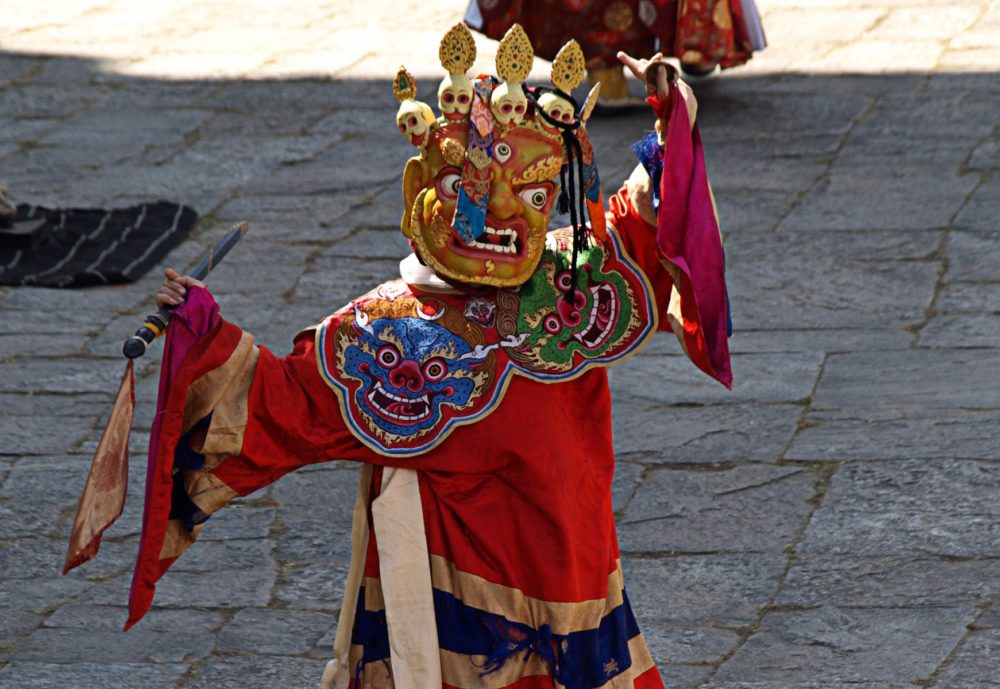
Amazing Festivals Of Bhutan The Kingdom of Bhutan, located on the eastern edge of the Great Himalayan range, is known as the “Land of the Thunder Dragon.” This carbon-neutral nation is also known as the world’s happiest country. Ten beautiful festivals will give further insight into the fantastic Bhutanese culture. Tsechue: It means the 10th day of the month on the Bhutanese calendar. These festivals are held in different cities, and the festival months differ according to each city, town or village. Guru Padma Shambhava, or Guru Rimpoche, the great sage and scholar, visited Tibet and Bhutan in the 8th and 9th centuries. He converted the opponents of Buddhism by reciting mantras, performing rites, and a subjugation dance to conquer local spirits and gods. These festivals commemorate the anniversary of his arrival in Bhutan. 1. Paro Tsechue 17th to 21st March 2019 It is the most famous festival in Bhutan. Trained monks and laypeople wear colourful costumes and masks to perform dances. Witnessing Tsechues is one of the best ways to experience the ancient living culture of Bhutan. The highlight of this festival is the unfurling of a giant Thangka (traditional Tibetan Buddhist painting) that covers the face of the entire monastery. The Thangka, a religious scroll, is displayed to the public. The Bhutanese believe they are blessed with eternal peace by looking at the Thangka. 2. Thimpu Tsechue 8th to 10th October 2019 Tenzing Rabgye established the Thimpu Tsechue in 1670. It is an excellent opportunity to witness the locals gathered to celebrate the festival in their most elegant traditional Gho and Kira (dresses) in the nation’s capital. Moreover, you can observe the elaborate sacred dances in colourful costumes with the locals. The Tsechue in Thimpu is one of the most popular ones. However, if you want to witness a less crowded festival, Punakha’s celebrations are the ones to observe. 3. Punakha Tsechue and Drubchen https://responsibleadventures.com/wp-content/uploads/sites/3119/2019/11/Festivals-of-Bhutan.jpg?auto=compress%2Cformat& Punakha Drubchen 2nd March to 4th March 2019 Punakha Tsechue 7th to 9th March 2019 A Drubchen is another type of celebration in Bhutan. In West Bhutan, Punakha is the winter home of the Chief Abbot of Bhutan, locally known as the Je Khenpo. After several invasions by Tibetan forces in the 17th century to seize a religious relic, Zhabdrung Ngawang Namgyal led the Bhutanese victory. Punakha Drubchen was introduced to commemorate the triumph over the Tibetans, which has continued annually. To maintain the Bhutanese traditions, the locals requested the Government start a Tsechue in 2005. Both these festivals are celebrated with enthusiasm. 4. Jambay Lhakhang 13th November to 16th November 2019 The oldest temple in the Kingdom is the Jambay Lhakhang. They were founded in the 7th century by Songtsen Gonpo, a Tibetan King. Legend has it that a she-demon was obstructing the spread of Buddhism, which compelled the King to build 108 temples on her body across Tibet, Bhutan, and their borders. Jambay Lhakhang is one of the 108 temples. The festival here is unique, with a fire ritual held in the evening, and the crowds gather to witness the naked dance known as Tercham. 5. Jhomolhari Mountain Festival. 14th to 15th October 2019 This festival celebrates the community’s culture that lives together harmoniously with nature. The elusive snow leopard is a symbolic animal as it thrives in this area. Snow leopard-themed school children perform songs and dances during this festival. 6. Black-necked crane festival 11th November 2019 This annual festival is organized to generate awareness and understand the importance of conserving the endangered Black-necked Cranes. This festival is celebrated with cultural programs such as folk songs and dances: some of which are black-necked crane themes. In addition, the locals perform mask dances while the school children perform crane and environmental conservation-themed dramas and songs. This festival is celebrated in the courtyard of Gangtey Gompa in Phobjikha valley. 7. Haa Summer Festival 13th to 14th July 2019 Haa Valley is set amongst pristine lakes and alpine forests. Its lively and uplifting festival celebrates tradition, living culture, nomadic lifestyle, traditional sports, unique local cuisine, and religious performances. With its wild forests and rugged hills, the Haa valley is an excellent location to enjoy some of Bhutan’s best hiking. In addition, you can have a cultural immersion by participating in local sports, sampling local food, and listening to traditional songs. It is located close to the Paro international airport. 8. Nomad festival 23rd February 2020 23rd February 2019 Several nomadic communities at the northern frontier add vibrant colour, traditions, and culture to the nation. Nomadic tribes from Bumthang, Thimpu, Wanduephodrang, Trashigang, and Paro participate in this festival. They dress in traditional costumes, including clothing made from yak wool and “Brokpa” headgear conical. The women wear colourful handwoven aprons decorated and themed with flowers and animals. Colourful ribbons adorn the women’s folk plaited hair. 9. Kurjay Tsechue 11th July 2019 The festival takes place at the temple of Kurjey, which is in the Chokor valley of the Bumthang district. Legend has it that Guru Rimpoche was invited to ward off the evil spirits. Thus, there are imprints of Guru Rimpoche that were left behind after he subdued the demons. The Kurjey festival unites all Bhutanese and foreigners who gather to witness the ancient mask dances while basking in Bhutan’s natural beauty. 10. Pema Gatshel Tshechue 11th to 13th November 2019 Pema Gatshel is a town in East Bhutan. Their festival is celebrated for three days. When the local dancers perform the traditional mask dances, it is believed that the spectators are blessed. It is an annual social gathering to celebrate and contemplate religion.
12 Most Prominent and Popular Festivals Of Nepal
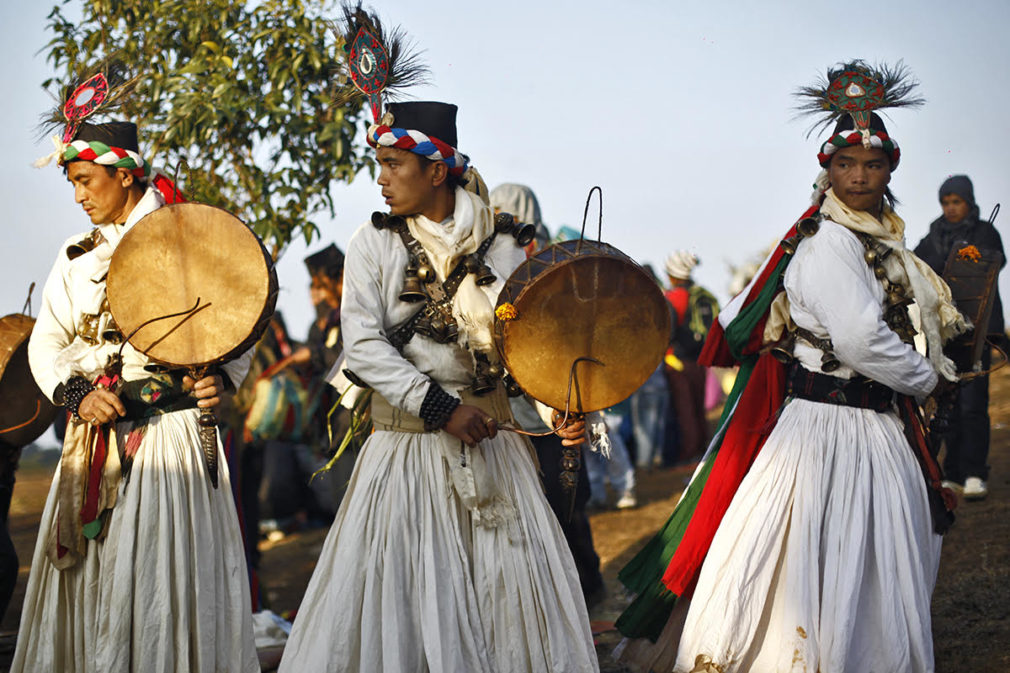
12 Most prominent and Popular Festivals Of Nepal Nepal is known for its numerous grand festivals that are colourful and vibrant. Most of the major festivals celebrated in Nepal have a religious connection based on ancient mythology for several millennia. Most of these festivals are Hindu and Buddhist, but it has recently included Muslim and Christian holidays into the national calendar as a secular nation. Despite the diverse ethnic background and practices, most citizens unite to celebrate major festivals. Dashain and Diwali (Deepavali) are the most prominent celebrations for Hindus throughout the nation. In the old towns of Kathmandu valley, the Newar community celebrates festivals such as Bisket Jatra, Rato Machendranath, and Seto Machendranath. Here are some of the principal/central festivals of Nepal. Dashain and Tihar Dashain 2020 – 5th October – 8th October Tihar 2019 – 25th October to 29th October These two are the biggest and most popular festivals of the Hindus in Nepal. Like many religious festivals worldwide, Dashain is a celebration of Goddess Durga’s victory over evil. It has a symbolic meaning that is deeply rooted in Nepalese society. Tihar or Diwali is a festival of lights and colours dedicated to Goddess Laxmi, the goddess of wealth. Buddha Jayanti or Vesak Day – 19th May 2019 Buddha Jayanti is celebrated to mark the triple celebration of Lord Buddha, his birthday, the day of his enlightenment, and Nirvana. It falls on the whole moon night of May, mostly and occasionally in June. The Buddhist communities pilgrimage to Buddha’s birthplace, Lumbini and Swayambhunath and Boudhanath Stupas in Kathmandu valley. Gai Jatra 19th August 2019 The festival of cows is another famous festival celebrated between August / September. Cows are marched on the streets of Kathmandu on this festival to commemorate the dead. Even though the Tharu community honours Gai Jatra, the Newar community of Kathmandu valley celebrates it with the most vigour. Janai Purnima 15th August 2019 Janai Purnima is the festival when the Brahmin and Chettri men change their Janai (sacred thread) after bathing in a river in Nepal. It is also known as Raksha Bandhan, where sisters pray for the long life of their brothers. It usually takes place in early August. Teej 1st September 2019 Teej is celebrated by women of Nepal annually. The women in Nepal celebrate it with dedication and love. Preparations for the festival begin well in advance. Shops that sell sarees, fabrics, and shoes are stocked up with most things red as it is life’s colour. When Teej approaches, women go on a shopping spree followed by sumptuous feasts. On the day of Teej, women dress up beautifully in their red outfits and glass bangles and display their heavy ornaments, like traditional Nepalese brides. This festival is held for three days. On the first day, they feast, fast on the second day, and perform the “Rishi Panchami” puja for their husbands’ marital bliss and long life. Krishna Janmashtami 23rd August 2019 Krishna Ashtami is observed to mark the birth of Lord Krishna. He is considered to be one of the ten incarnations of Lord Vishnu. The Hindus celebrate this festival with much fanfare in Nepal and neighbouring India. Devotees of Lord Krishna fast or only consume fruits and dairy products on this day. They visit temples dedicated to him in large numbers by carrying idols and images of Krishna. Traditional musicians often accompany them. It usually falls in August / September. Fagun Purnima or Holi 20th March 2019 The ancient Hindu festival of Holi falls in either late February or early March. It is in celebration of the death of the mythical demoness Holika. It is a weeklong celebration. All observe the last day with coloured powders and water sprays. Read more on Holi Maghe Sankranti 15th January 2020 15th January 2019 Maghe Sankranti is also called Makar Sankranti. It is observed yearly on the first month, Magh, which usually falls around the 15th of January. The celebration marks the end of the supposed ill-omened month Poush in which all religious ceremonies are forbidden for the Hindus. Even though Magh’s 1st is considered the coldest day of the year, the celebration welcomes warmer and better days for health and fortune. The festival is famous not only in Nepal but amongst Nepalese communities worldwide. It also is a celebration of the days getting more prolonged than the nights. People take holy dips in rivers all over Nepal, despite the cold. The festival’s unique delicacies are yam, chaku (sweet prepared from boiled and hardened molasses), chaku-sesame candy, and ghee. Indra Jatra 12th September 2019 Indra Jatra is the festival to worship Lord Indra. He is considered to be the God of Rain and King of Heaven. Therefore, celebrating this festival is believed to thank Indra for the rain and to make him happy. It is an eight-day festival at the end of August or early September. The eighth-day festival also coincides with the Kumari Jatra – the procession of the Living Goddess. Another significant event of this festival is Kumari Jatra (the procession of a living goddess). King Jaya Prakash Malla started this tradition in 1756 AD. Three chariots of Ganesh, Bhairav, and goddess Kumari are pulled along the Kathmandu festival route for three days, accompanied by musical bands and dancers. The three days of the chariot-pulling procession cover different festival routes, and each day’s celebration ends back at Basantapur. Mahashivaratri 4th March 2019 It is also known as “The Night of Shiva.” This Hindu festival is celebrated annually with a deep respect for Lord Shiva. Devotees sing devotional songs to honour and worship Lord Shiva and sanctifying rituals throughout the night. For the devotees of Shiva, this is the most auspicious day of the year. It is believed that whoever worships him with sincere devotion will be rid of all sins and be blessed with Nirvana or Moksha (liberation from the eternal cycle of life and death). Shivratri is the night he is believed to have performed a divine dance of
10 Amazing festivals of Ladakh
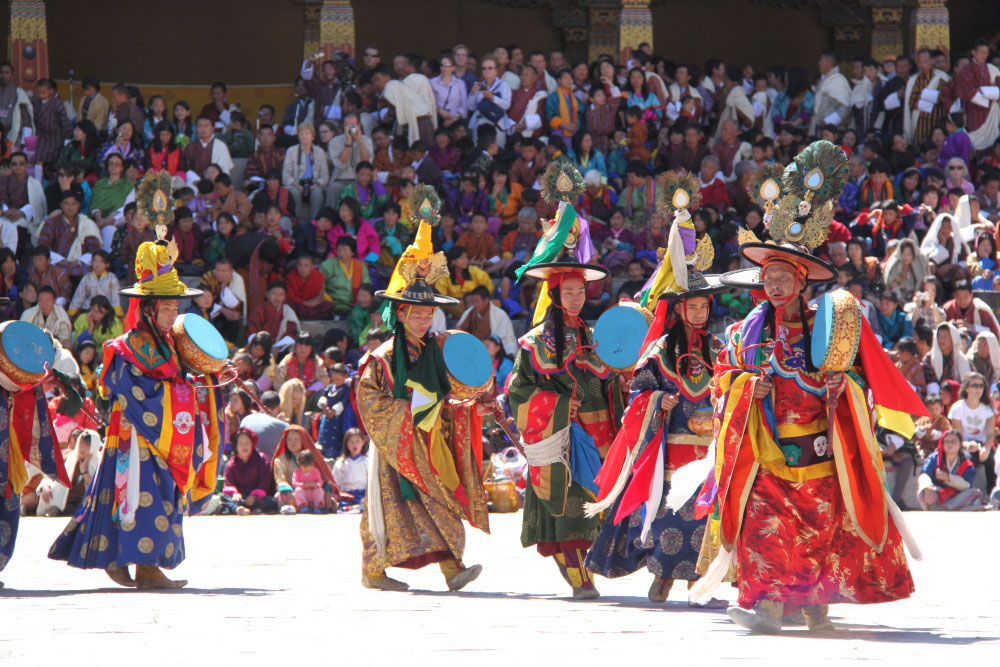
Ladakh is known for its grand festivals with large colourful masks; traditional dancing and singing are common at many of the cultural festivities in the Leh region. Leh, the former capital of Ladakh, was once the Himalayan Kingdom. It is now a district of Leh district in the Indian state of Jammu & Kashmir. It is the second-largest district in the country, area-wise. The Leh Palace, where the royal family resided, dominates the town. It was constructed as a replica of the Potala Palace. Leh celebrates many religious festivals due to the massively influencing Tibetan Buddhist culture. Although the festivals appear similar in celebrating good over evil victories, each monastery has a deep history. The festivities are in honour of the great monks who founded the institution. Here are the major festivals in Ladakh
Buddhist Mask Dances: Ritual Dance by Tibetan Monks
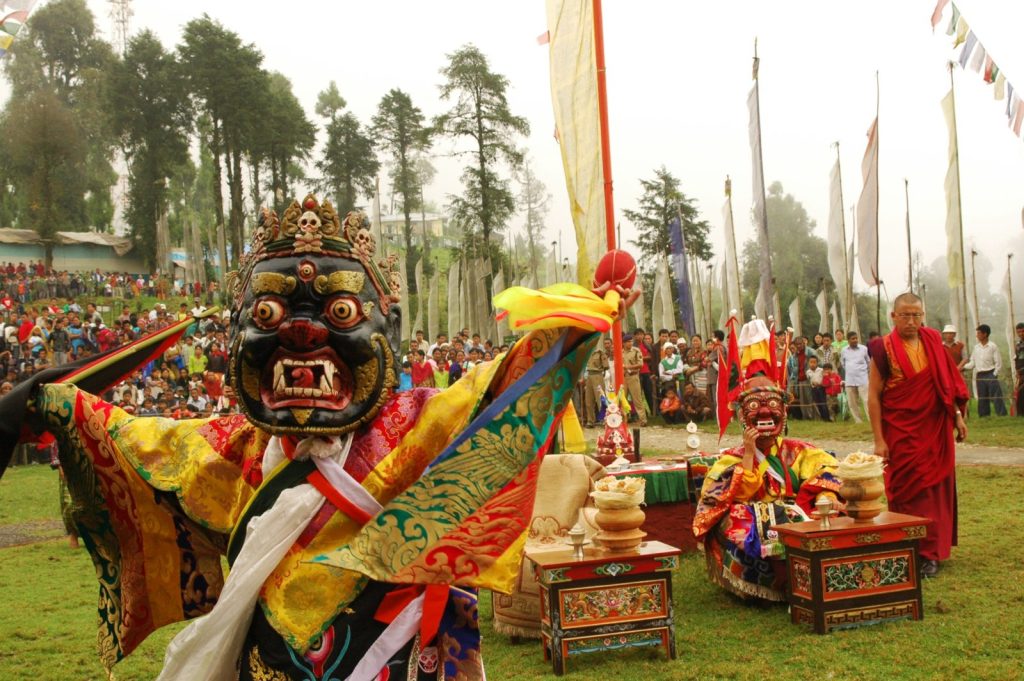
The vibrant Masked dances performed by Tibetan Buddhist monks are called “Cham” – Dance in Tibetan. It is presented in colourful costumes vibrantly with its roots in Tibetan Buddhism. The monks almost always perform mask dances. The dances depict tales of the destruction of evil spirits by the deities for humankind’s greater good. The ceremonial dance or Cham is practised all over the Himalayas, where Tibetan Buddhism has practised actively. The Himalayan regions of Tibet, Bhutan, India, and northern areas of Nepal are where these mask dances occur during unique festivals. The performance can be spellbinding to those attending the celebrations. Origin of Mask Cham (dance) The origins of the Tibetan Buddhist Mask Dance date back to around the 6th century; Ancient Indian literature tells of Ger’s sacred dance performed by the Dakinis when Kalachakra’s lesson. Cham is part of a Tantric ritual. Tantra was developed in ancient India, in the region of modern-day Pakistan. Many cham elements to their roots in Hinduism and the Bon tradition (Tibet’s spiritual practice before Buddhism). The Cham dance tradition depicts the tale of what Guru Padmasambhava did to eradicate evil spirits that obstructed Samye Monastery’s construction in the 8th century. The mask dances are an integral part of Mahayana Buddhism. The religious significance of Cham The Cham is considered an act of cleansing of the evil forces. The dance is performed in colourful brocade costumes and elaborate masks. The Gods and Deities of Tibetan Buddhism are summoned before the performance. The dance is influenced by tantric traditions and is done for the betterment of all sentient beings. The dance focuses on chanting, hand gestures, and the deities’ invocation while concentrating on negativity deletion. The performance acts as moral lessons for the laypeople while narrating stories of their legendary gods. It also familiarizes the laypeople with the kind of deities they will encounter during their 49 days of the transition period (called Bardo in Tibetan) between death and rebirth. It is performed at monastic courtyards around a central prayer flagpole. The performers hold conventional instruments in their hands and dance to the monastery’s musical instruments’ tune. The hand gestures represent different aspects of the tale. There is also some comic relief to lighten the sombre sequences when performers jump into the scene in skeleton costumes and other characters by performing acrobatic and comic feats. The Cham performance can last from 2 days to over 15 days, from the deities’ invocation to the commencement. Finally, a climactic scene is enacted when the ‘Chams’ approach its end. A sacrificial offering takes place by making a human figure from dough made from roasted barley. It is cut ritually into pieces and scattered in the four essential directions. It represents the eradication of Buddhism’s enemy and purifies the human soul from the three evils of ignorance, jealousy, and hatred. The mask dance gives an insight into the Buddhism’sh culture and heritage of Masks and Costumes. The Cham dance’s main attraction for many non-Tibetans is the multitude and diversity of the colourful masks. The Masks represent the embodiment of the wrathful deity. The Mask drives terror and great fear into the hearts of the evil forces. However, it also provides tranquillity and peace to Buddhists seeking enlightenment through prayer and meditation. Antique masks are considered very special and consequential. They are revered with pilgrims praying before them, especially on special occasions or during religious festivals. The famous stone mask of Palden Lhamo, located in the Jokhang Temple in Lhasa, is one such item. The Cham masks are about two to three times larger than a human head and substantial. The dancers wear padded caps or folded towels to cover their forehead, sides of the face, and neck to avoid chaffing and cuts because of the Mask’s weight, an awkward centre of gravity, and sharp-edged corners. The Cham performers wear brightly coloured robes, aprons, and ornaments traditionally made of bones. Antique costumes are rare due to time, rodents, insects, and wear and tear. However, along with a broader selection of modern accessories, the silk and brocade will soon make for a more extensive collection of modern colourful, flowing costumes to be reproduced. In addition, the old decorations made from animal or human bones can now be designed from various plastic or other material for easier acquisition and much faster work. The monks wear the costumes over their usual dress minus the outer clothing. The dance costume consists of a gown with long, broad sleeves over which a short triangular cape called a tippet can be worn. It is a poncho-like mantle that is either decorated or embroidered colourfully. Check out our Trekking packages for Nepal, Bhutan, India, and Tibet.










